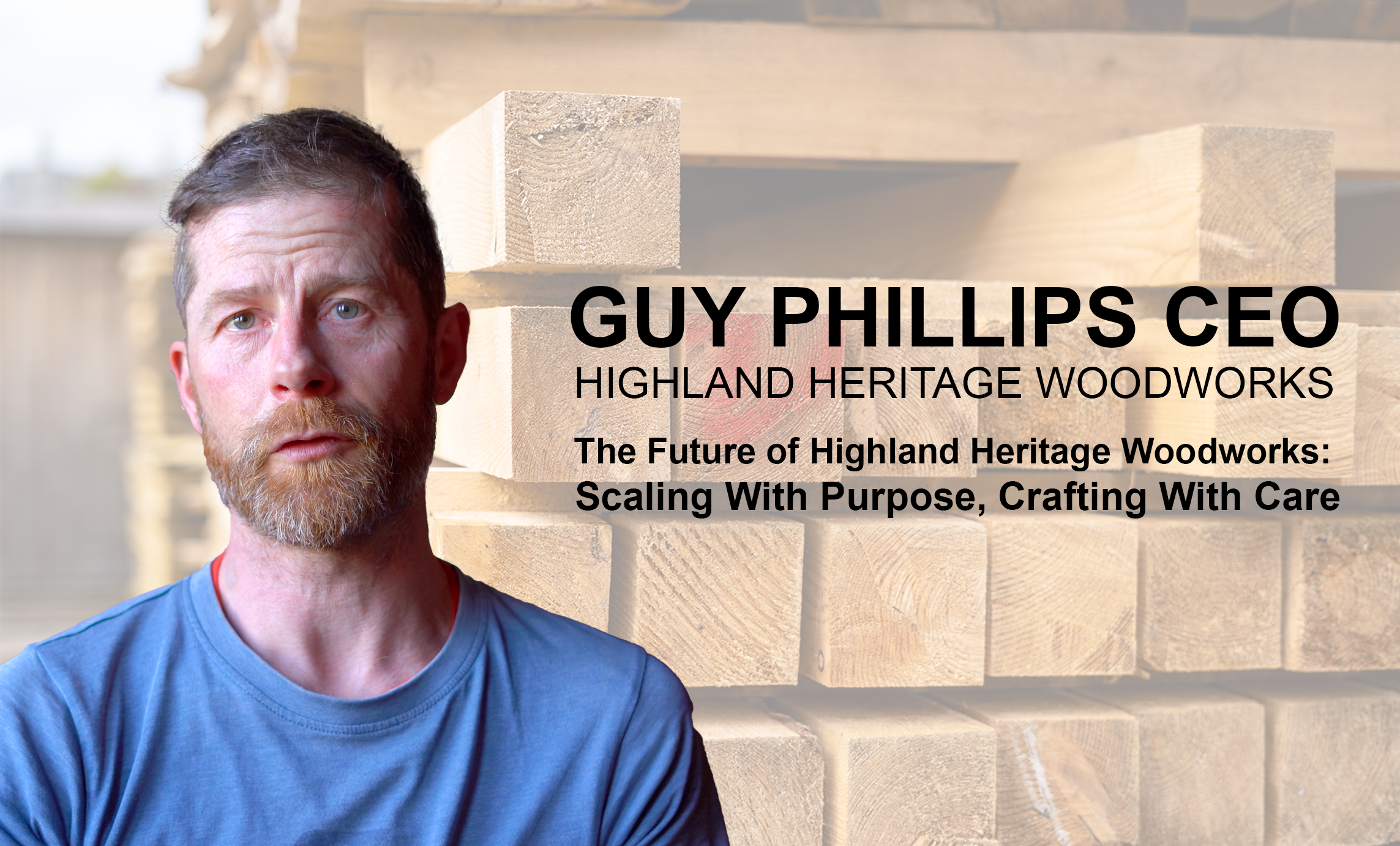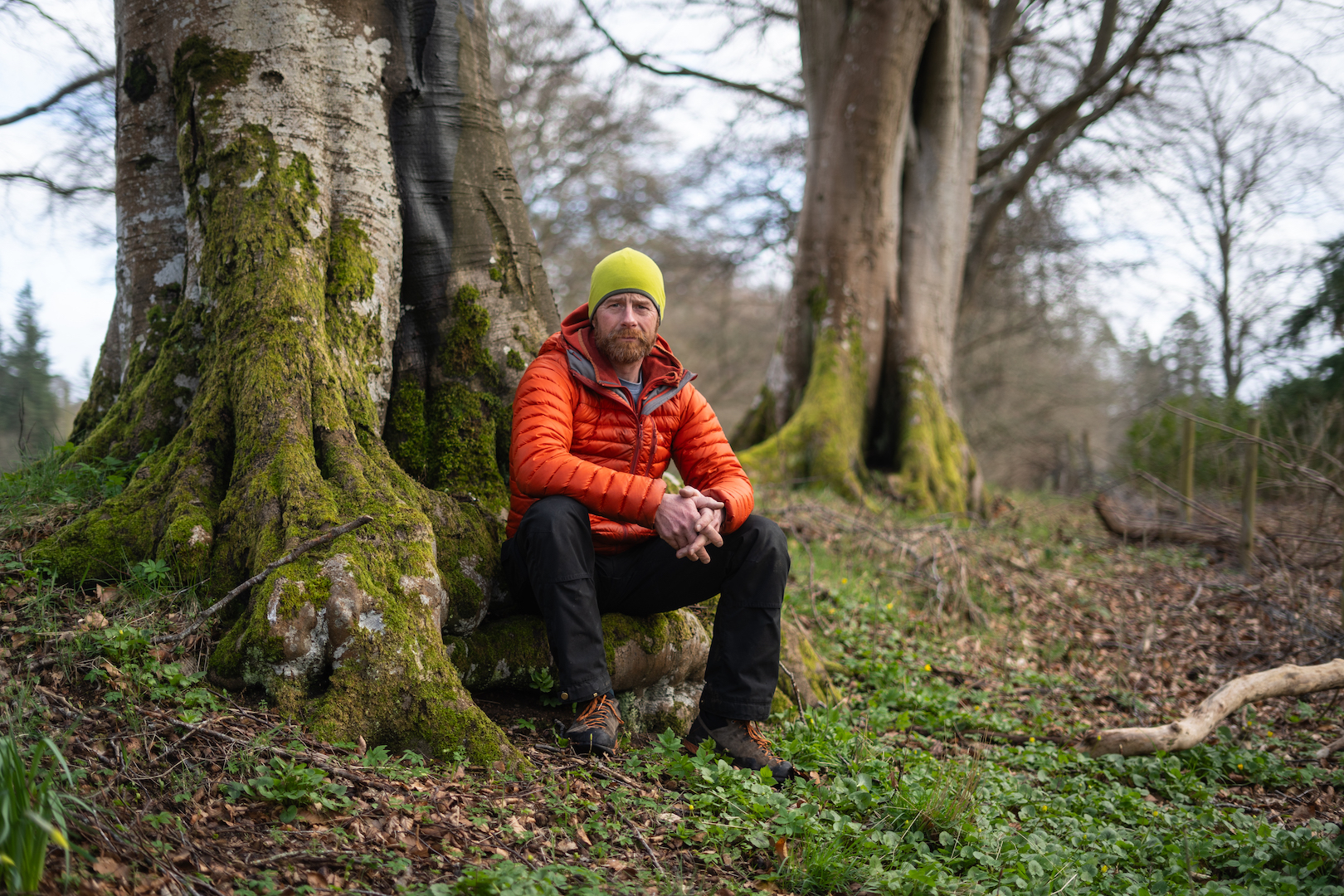Guy Phillips, CEO of Highland Heritage Woodworks
When we first started Highland Heritage Woodworks, the idea was simple: make things that last, from wood we could be proud of, in a way that didn’t trash the planet.
Four years on, that idea’s still the same. But the scale of it has grown a lot.
We’ve gone from a team of five making staircases in a rural workshop, to running a busy sawmill yard with serious kit, ten full-time staff, and projects ranging from heritage joinery to full-scale architectural timber. We’ve invested heavily in electric-powered mills, a biomass kiln, and some brilliant people. We’ve doubled our turnover year on year. And we’ve proved (to ourselves at least) that sustainability and growth can go hand in hand if you’re willing to do things the hard way.
Now we’re stepping into the next chapter. And it’s a big one.
We’re launching new products, moving into new markets, and looking to double the team again if we can do it in a way that still feels like us.
What We’re Building (And Why It Matters)
We’ve never wanted to become a high-volume timber mill. That’s not our game. What we’re trying to build is something more connected, something that proves Scottish-grown timber can do more than people think.
‘What we’re trying to build is something more connected something that proves Scottish-grown timber can do more than people think.’
It can:
-
Replace imports with locally sourced alternatives that are just as strong (if not better)
-
Create good rural jobs, rooted in real craft
-
Bring natural beauty into homes, public spaces, and architectural projects
-
Support a genuinely circular, regenerative supply chain from forest to finish
This isn’t just about growing our business. It’s about shifting the system. And we’re starting with two big steps: urban street furniture and mass timber components.
Rethinking Public Infrastructure
We’re currently developing a line of urban street furniture benches, bollards, planters, bike racks all made from Scottish-grown Douglas fir.
But it’s not just about making things for parks. It’s about asking why most of these products are still being made from imported timber, soaked in chemicals, and built for replacement rather than longevity.
What we’re offering is something different:
-
Fully traceable wood from local forests
-
Dried using waste heat from our own biomass kiln
-
Designed with an eye for form, not just function
-
Made in small batch runs that scale up, without losing soul
We’re in talks with a national client on a potential rollout. If it lands well, it could double our headcount and shift the needle on what local supply chains can do for public projects.
Mass Timber, Done Locally
We’re also pushing forward into mass timber especially cross-laminated timber (CLT) components.
CLT’s got a huge role to play in low-carbon construction. But nearly all of it is imported. And that’s just daft, considering what we’ve got here.
‘Scotland has the raw material. We’ve got the kit’
Scotland has the raw material. We’ve got the kit a large-scale electric sawmill and an 80m³ biomass kiln, both run on renewables. We’ve got craftspeople who know how to work to architectural spec. And we’ve got deep links with the people who manage the forests.
So we’re working up prototypes, talking with architects, and starting to supply locally made timber components for CLT and other structural builds.
It’s early days. But it could be big not just for us, but for everyone along the chain.
Growing Without Losing Ourselves
We’ve learned the hard way that growth has to be done with care. If you go too fast, you lose what made the thing special in the first place.
So we’re sticking to a few principles:
-
Hire slowly, build the right team
-
Invest in people, not just machines
-
Build systems that support the craft, not replace it
-
Keep checking in with the basics:
-
-
Does this support Scottish timber?
-
Does it create good local work?
If yes, we keep going. If no, we stop and re-think.
-
That’s the discipline. That’s what’s kept us on track so far.
A Rising Tide
One of the best bits about this next phase is how it lifts others up.
When we process more timber, we buy more logs that’s better returns for landowners and foresters. When we grow our team, we create proper careers in a rural part of Scotland where they’re needed. When we supply architects or councils, we help hit sustainability goals and deliver value that lasts.
And because we’ve done the hard work the investments in green kit, the traceability, the low-carbon processes we can back up what we say with how we work.
We’re not the biggest. But we’re proof that this way of doing things works. And that it can scale.
What Keeps Us Grounded
As things get bigger, we’re doubling down on the simple stuff that keeps us steady:
-
We only use local wood. No imports. Ever.
-
We mill and dry on-site, using renewables and our own waste
-
We can trace every piece of timber back to the forest it came from
-
We hold onto the craft, even in batch production
-
We treat the team like the future depends on them because it does
None of this is fancy. But it’s solid.
Final Thoughts
The future of Highland Heritage Woodworks isn’t just about timber. It’s about trust.
Trust in the material. Trust in the people who work it. Trust that you can build something properly and still grow without cutting corners.
We’ve got a long way to go. But we’re getting there. With more timber. More projects. More jobs. And the same heart we started with.
–––
Guy Phillips is the CEO of Highland Heritage Woodworks a master carpentry, sawmill and cabin design & build business based in Northeast Scotland. They specialise in high-quality, sustainably sourced Scottish timber for carpentry, construction, cabins and architectural projects.




No responses yet